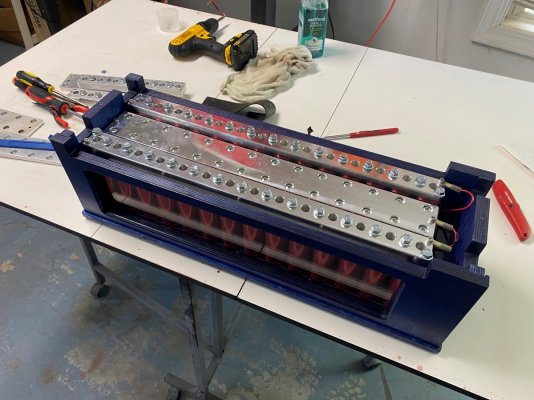I found a lot of BMS threads, but none that really answered my question. I'm hoping this thread can grow into a pinned/sticky that will help many others too.
I upgraded my 2023 stereo system with a subwoofer and amplifier. We ran 1/0 Copper (both positive and ground) to behind the seat. I'm going to be putting a 1500W RMS amplifier back there and am beginning to worry about voltage support. I found a a great little sealed AGM battery I can put back there for power stability. So my question is rather general: "Can someone please teach me how the BMS system works in detail?".
I currently have the battery in parallel (fused, but no isolator). On my last truck (Silverado) I had an isolator in the circuit to disconnect the battery when the truck was off to avoid any parasitic drain since they're not identical batteries. I may do that here, but want to learn more about Ford's system first. I have a very strong background in electricty and power, but almost zero experience with Ford's setup.
- Will changing the 80% SOC in ForScan result in ~14.4 volts always?
- Do I need to change my battery Watt-Hour setting with Forscan?
- Please share any other tips, tricks, or thoughts about Fords BMS and a 2nd battery.
THANK YOU!!
I upgraded my 2023 stereo system with a subwoofer and amplifier. We ran 1/0 Copper (both positive and ground) to behind the seat. I'm going to be putting a 1500W RMS amplifier back there and am beginning to worry about voltage support. I found a a great little sealed AGM battery I can put back there for power stability. So my question is rather general: "Can someone please teach me how the BMS system works in detail?".
I currently have the battery in parallel (fused, but no isolator). On my last truck (Silverado) I had an isolator in the circuit to disconnect the battery when the truck was off to avoid any parasitic drain since they're not identical batteries. I may do that here, but want to learn more about Ford's system first. I have a very strong background in electricty and power, but almost zero experience with Ford's setup.
- Will changing the 80% SOC in ForScan result in ~14.4 volts always?
- Do I need to change my battery Watt-Hour setting with Forscan?
- Please share any other tips, tricks, or thoughts about Fords BMS and a 2nd battery.
THANK YOU!!


